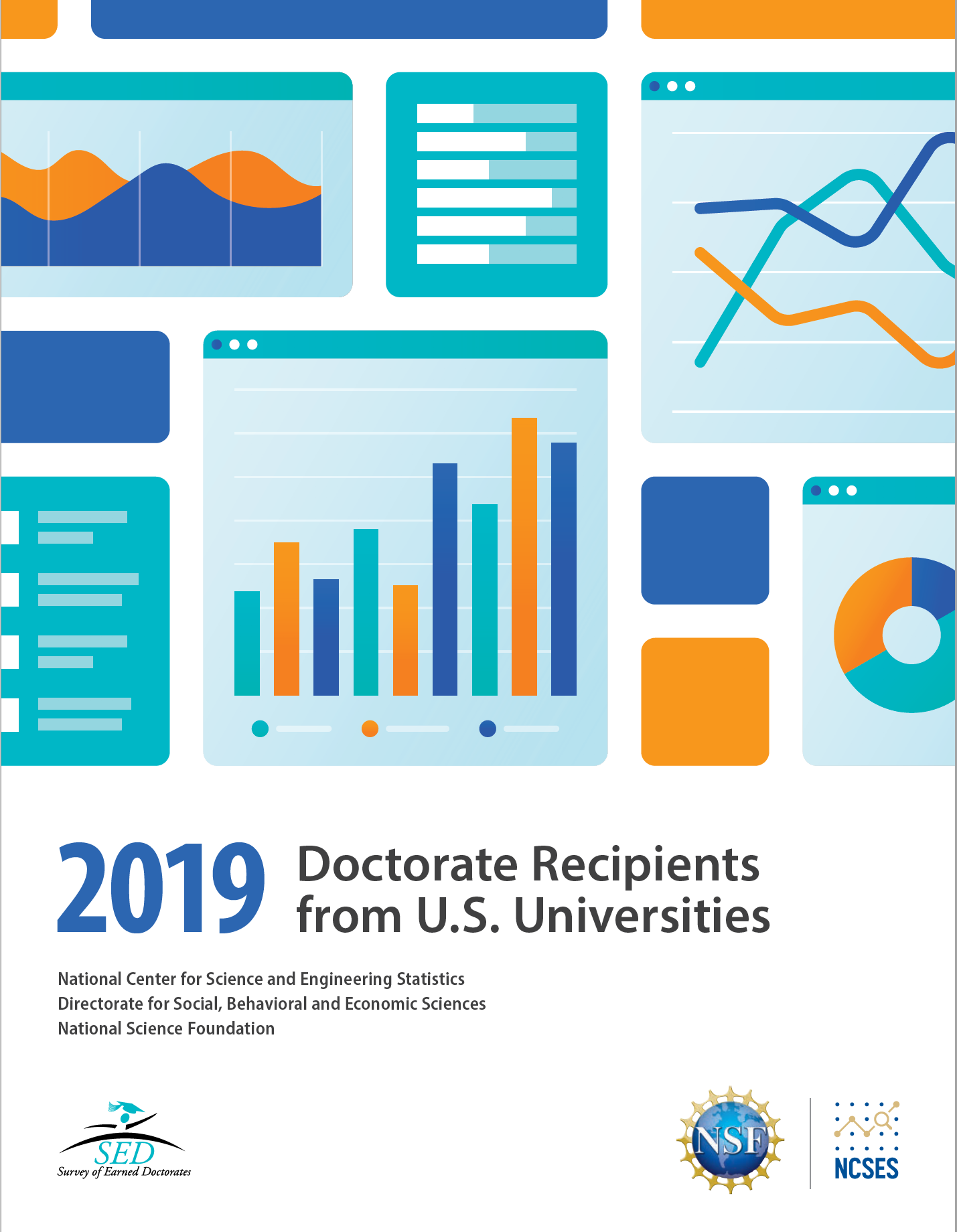Published in December 2020, the National Science Foundation’s report 2019 Doctorate Recipients from U.S. Universities offers key insights into the “[development of] human resources that are critical to a nation’s progress—scientists, engineers, researchers, and scholars who create and share new knowledge and new ways of thinking that lead, directly and indirectly, to new products, services, and works of art.” (NSF 2020, p. 3). In addition to trends by Science, Engineering, and other fields, the report offers insights on topics, which may influence U.S. Department of Defense internal profession development and external recruiting efforts, such as:
- Increase in job commitments to PhD candidates before graduation;
- Median expected salaries by field;
- Sources of financial support;
- Debt by field upon graduation;
- Time to complete PhD by field;
- Breakdown by gender, ethnic, parental education and other demographics; and
- Growth in degrees conferred to non-U.S. citizens by field and top ten countries.
From the report’s Executive Summary,
Key takeaways from the 2019 data:
- In 2019, the number of doctorate recipients increased to 55,703. This represents a 1% increase from 2018, below the 3.2% average annual growth since the survey’s inception.
- The proportion of doctorates earned by temporary visa holders remained steady at 36% between 2010 and 2017, then increased to 37% in 2018 and to 38% in 2019.
- The number of underrepresented minority doctorate recipients (Black or African American, Hispanic or Latino, and American Indian or Alaska Native) grew to 5,480 in 2019. This represents a 6.7% increase from 2018.
- Women continue to be more than half of doctorate recipients in life sciences, psychology and social sciences, education, humanities and arts, and other non-science and engineering (non-S&E) fields. However, they constitute about a third of those in physical sciences and earth sciences and a quarter of those in engineering and in mathematics and computer sciences.
- Although the pattern of rising parental educational attainment is visible among all races and ethnicities, doctorate recipients who are underrepresented minorities are less likely to have at least one parent with a bachelor’s degree than their Asian or White counterparts.
- Definite commitments for employment across all broad fields have continued to increase since 2017, following low points in 2014–16.
- In 2019, in every broad field of study except for humanities and arts, median expected salaries for doctorate recipients committing to jobs in industry were higher than for those committing to postdoctoral positions or jobs in academe.
- In 2019, large majorities (71% and above) of doctorate recipients in science and engineering (S&E) fields excluding psychology and social sciences reported holding no debt related to their graduate education. In psychology and social sciences, humanities and arts, and in other non-S&E fields, the share of doctorate recipients with no debt was about half; in education, it was less than half.
- In the past 10 years, the share of Black or African American doctorate recipients with bachelor’s degrees from historically Black colleges and universities (HBCUs) declined in both S&E and non-S&E fields, as the number of Black or African American undergraduate students increased but the number of HBCUs remained nearly constant.
- In the past 10 years, the proportion of Hispanic or Latino doctorate recipients with bachelor’s degrees from high- Hispanic-enrollment institutions (HHEs) increased in both S&E and non-S&E fields, as the number of HHEs rose with Hispanic undergraduate enrollment.
- The majority of doctorate recipients earn a master’s degree before their doctorate with the exception of those in the biological and biomedical sciences field, where only 41% of 2017–19 graduates earned a master’s degree.
Updated: 6 February 2021


